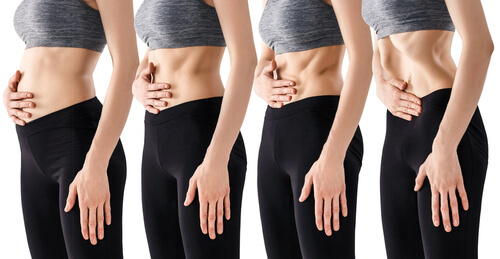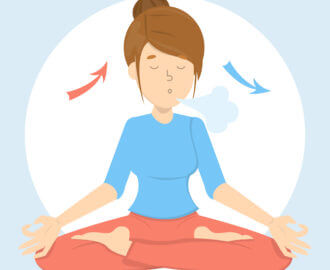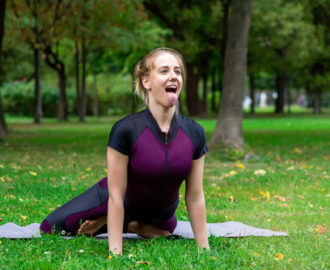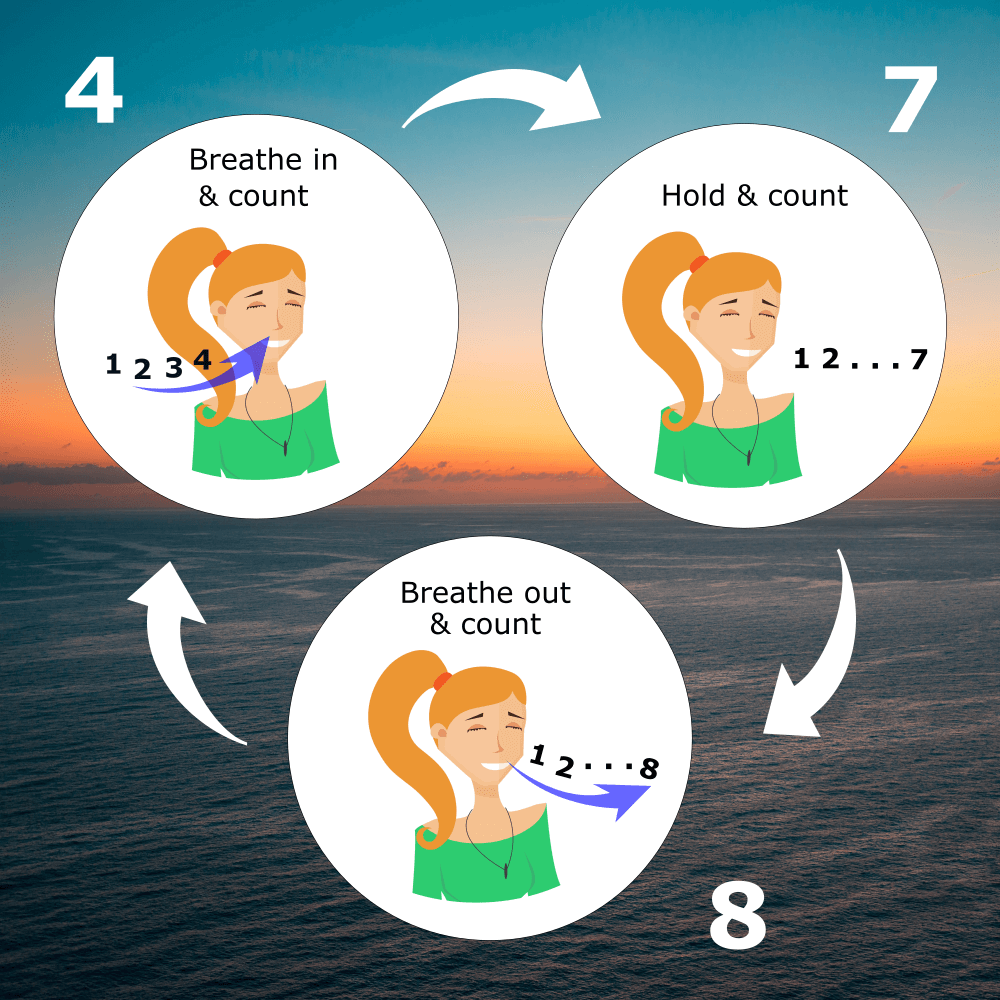
October 25, 2024
Having too much anxiety can be paralyzing. You get too worked up over stuff but can’t seem to focus on what you really need to do. To help you relax, we’ve rounded up the 7 simple but effective breathing techniques for anxiety you can try now.
BREATHING TECHNIQUES FOR ANXIETY
ABDOMINAL BREATHING
Perhaps one of the most popular breathing techniques for anxiety is abdominal breathing. You might know it as diaphragmatic breathing or belly breathing.
Recent research shows that diaphragmatic breathing can significantly improve focus and lower blood cortisol levels in adults.
HOW TO DO ABDOMINAL BREATHING
- Lie down on your back or sit comfortably on a chair.
- Place a hand on your abdomen.
- Inhale for about two seconds while making your belly expand.
- As you exhale, notice your belly going down.
- For best results, do this a few times.

LONG EXHALE
Breathing in may not always make you feel relaxed. It’s because it stimulates the sympathetic nervous system associated with the fight-or-flight stress response. On the other hand, exhaling is linked to the parasympathetic nervous system which can calm you down.
When we’re stressed out or panicking, we tend to make short and quick breaths. Sometimes, this can lead to hyperventilation which reduces the amount of oxygen that reaches our brain.
A 2018 study in males aged 21-28 year old showed that exhaling longer was able to activate the parasympathetic nervous system. The participants inhaled for 4 seconds and exhaled for 6 seconds after regular spontaneous breathing. The study concluded that this technique is useful in keeping the mind calm.
So, when you feel stressed, you can try lengthening your exhale.
HOW TO DO LONG EXHALE
- Before breathing in deeply, try to make a long slow exhale and push the air out.
- Next, inhale then make your exhalation a little longer than your inhalation. For instance, when you inhale for 2 seconds, exhale for 4 seconds.
- Repeat for about 3 to 5 minutes.

EQUAL BREATHING
Another breathing technique you can do when you’re tense and anxious is equal breathing. As the name suggests, the length of your inhalation is equal to your exhalation.
Equal breathing is a type of breathing that’s usually used in yoga. It’s a form of pranayama or breath regulation that’s also called sama vritti.
HOW TO DO EQUAL BREATHING
- Close your attention and focus your attention on the breath. Breathe naturally a few times.
- Then, as you inhale through your nose, slowly count to four.
- Exhale through your mouth for the same amount of time.

LION’S BREATH
Also called Lion’s pose, this energizing pranayama technique uses forceful exhalation. Aside from empowering you, this technique stretches the muscles in your face and stimulates your diaphragm and vocal cords.
HOW TO DO LION’S BREATH
- Sit in a comfortable seated position. You can also sit in a kneeling position.
- Breathe naturally a few times then make your inhalation as long as your exhalation.
- Then, inhale deeply through your nose. When you exhale, open your mouth wide, put your tongue out, and say “haaaaaaah.” Yes, roar like a fierce lion! You can even put up your arms like one.
- Do this for 3 to 4 rounds then return to natural breathing.

4-7-8 BREATHING
If you have trouble sleeping, then you might want to take note of 4-7-8 breathing. It was created by celebrity doctor, Dr. Andrew Weil. It’s also called relaxing breath.
Insomnia is common for people with anxiety. As alternative treatments, you might consider hypnosis or acupressure for sleep.
HOW TO DO 4-7-8 BREATHING
- Breathe regularly a few times.
- Breathe in through your nose while counting to 4 in your head.
- Hold your breath for 7 seconds
- Breathe out through your mouth while pursing your lips (like you’re going to whistle) for 8 seconds.
- Do these steps 4 times. You might notice yawning at the end of 4 cycles.

RESONANT BREATHING
Resonant breathing or coherent breathing involves breathing at about 5 full breaths every minute.
When you breathe at this rate, you can lower your stress levels and can lower blood pressure according to a 2019 study.
HOW TO DO RESONANT BREATHING
- Inhale while counting to 5.
- Exhale while counting to 5.
- Do this pattern for 3 to 5 minutes.

SLOW DEEP BREATHING
Slow deep breathing is when you deliberately slow down your breathing pace from the average resting state (16 to 21 breaths per minute).
When you breathe in slowly and deeply, more oxygen enters your blood and you calm down parts of your brain in charge of the anxiety response, such as the amygdala and hippocampus.
Moreover, research shows other physiological benefits such as decreasing blood pressure fluctuations and quieting down the nervous system. It describes the “autonomically optimized respiration” as 6 to 10 breaths per minute.
And if you have issues with sleep, a 2019 study showed that slow deep breathing is effective as an adjunct treatment for insomnia.

HOW TO DO SLOW DEEP BREATHING
- Imagine you’re overwhelmed and stressed out. Feel everything tense up. Your breathing and heart rate may be faster.
- Then, pay attention to your breath.
- Inhale deeply and count to at least 3 then exhale to 3 as well.
- Notice yourself feeling more relaxed after a few minutes.

Stress and anxiety are part of daily life. But there are easy and simple ways to reduce stress. If you need more help managing stress and anxiety, we offer a wide array of services at Everybody In Mind Wellness Center and Hemisphere Hypnotherapy in Sudbury, Massachusetts. You can take a look at them here.


